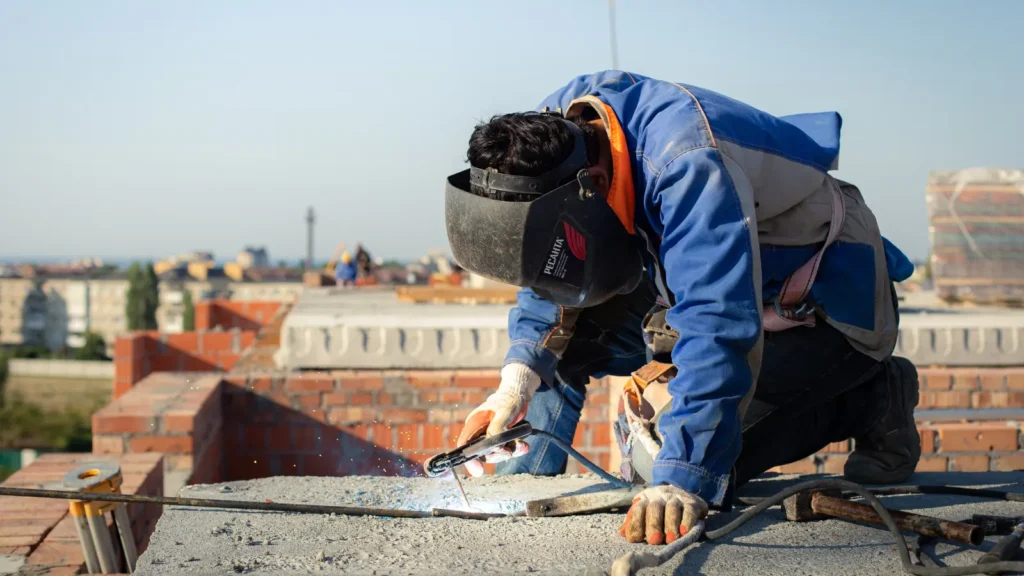Roof issues in Orange County aren’t just inconvenient. More than anything, they can escalate quickly. Leaks, missing shingles, and heat damage all add pressure to make a decision fast. But when quotes range widely, it’s tough to know what’s fair or necessary.
Homeowners often find themselves unsure of whether to repair, patch, or start fresh. Even more confusing, two different companies can give completely different numbers for the same job.
In this blog, we’ll break down what affects the cost of a new roof in Orange County. From square footage to the type of materials used, each factor plays a role in your final estimate.
You’ll also see how hiring a trusted roofing contractor can impact not only your budget but also the durability and performance of your new roof. Let’s get into what you need to know before signing any contract.
What Classifies as a New Roof Installation in Orange County
A new roof installation goes beyond just laying down new shingles. In Orange County, it involves a complete removal of the old roofing system. This means tearing off the current shingles, inspecting the underlayment, and evaluating the wood decking underneath.
If the decking shows signs of rot, warping, or moisture damage, it gets replaced before any new materials go on.
Local code requires that specific elements be included for a job to be considered a full replacement. This includes installing new flashing around chimneys and vents, laying down fresh moisture barriers, and applying edge metal.
For homes in fire-risk zones, fire-resistant underlayment is often mandatory. These additions aren’t optional as they’re part of passing inspection and keeping your home up to code.
Finally, a true new roof installation always includes a permit and at least one inspection from a city or county building official. If your roofing job doesn’t require a permit or skips a full tear-off, it’s not classified as a full installation in Orange County.
Understanding this distinction is key to comparing estimates and ensuring your investment lasts.
Key Factors That Influence Roofing Costs in Orange County
Roofing prices in Orange County don’t come from guesswork. Several variables affect the final number in your estimate. So what exactly makes one roofing job cost more than another?
Let’s take a closer look at the main factors that shape roofing costs in this region:
Property Size and Roof Complexity
The overall square footage of your roof is the foundation of any roofing quote. Contractors calculate the number of “squares” on your roof, with each square covering 100 square feet. A larger home with a wide roof surface will naturally require more materials and labor, pushing up the total cost.
Beyond size, the shape of the roof also matters. Homes with steep pitches, multiple gables, skylights, or dormers take longer to work on. These features add complexity to both material placement and worker movement, increasing the total hours and safety gear needed.
Even basic accessibility can change your price. If your roof sits high or is difficult to reach with equipment, labor becomes slower and more physically demanding. This often results in higher charges to compensate for the added effort.
Roofing Material Selection and Quality
Not all roofing materials are priced the same. Asphalt shingles are generally the most budget-friendly, but even within this category, quality varies. Higher-end shingles last longer and come with better warranties, but they also cost more up front.
If you choose premium materials like clay tiles, metal panels, or synthetic slate, expect to see a jump in both product and labor costs. These materials often require skilled installation, which narrows down your list of qualified contractors and extends the project timeline.
Material weight also affects pricing. Heavier roofing options may require structural reinforcement to handle the load. That’s an added layer of cost many homeowners don’t anticipate until the planning phase is underway.
Local Building Codes and Permit Requirements
Every city in Orange County enforces its own rules for roof replacements, like California’s Title 24 Compliance. Permits are required, and inspections are scheduled before and after the work. These steps ensure your roof meets local standards, especially when it comes to fire resistance and ventilation.
Comprehensive roof inspections may uncover issues beneath your current shingles. If inspectors find damaged decking or ventilation problems, you’ll need to address those before the project can move forward. These extra steps can extend timelines and increase final costs.
There are also mandatory code upgrades that come into play with older homes. If your roof doesn’t meet current seismic or fire safety standards, contractors are required to bring everything up to date. That compliance work adds more line items to your bill.
Labor Costs and Contractor Availability
Orange County has a high demand for skilled labor, which directly impacts roofing rates. Labor makes up a large portion of any roofing job, often as much as half the total cost. The more experienced and licensed the crew, the more you’ll typically pay for their time.
Availability also matters. During busy months, in-demand contractors have packed schedules and limited openings. If your job needs to be rushed or prioritized, expect additional fees or fewer discounts.
Local contractors also carry business insurance, licensing, and training costs that get factored into their pricing. When you choose someone who runs a tight, legal operation, their overhead ensures compliance and protection, but it also affects your quote.
Seasonal Demand and Weather Considerations
The calendar heavily influences roofing. Spring and early summer tend to be the busiest times, when contractors are fully booked and working at full capacity. In these periods, prices often go up due to limited availability and high demand.
If you schedule a project during a slower season, like late fall or winter, you may get better rates. However, weather unpredictability becomes a factor. Rain delays or cold snaps can push timelines back or increase the need for protective materials.
Timing can also affect material lead times. Some premium roofing products take longer to source in the off-season. If materials are delayed or backordered, you may end up paying more for expedited shipping or substitute materials.
Financing Options and Cost-Saving Strategies for Orange County Homeowners
Replacing a roof is a major investment, and for many Orange County homeowners, upfront costs can feel overwhelming. Fortunately, several financing solutions are available, and many are designed specifically for home improvements like roofing.
These options vary based on your credit, income, and equity, but the right one can make a big difference in how manageable the expense feels.
Homeowners often turn to personal loans, home equity lines of credit (HELOCs), or financing programs offered directly through their roofing contractor. Some choose government-backed loans if they’re combining their roofing project with energy-efficient upgrades.
For those who qualify, local rebates or incentives may also be available, especially when using reflective or “cool roof” materials. These choices can reduce the financial pressure while still allowing you to get a high-quality installation.
Here are five cost-saving and financing tips every homeowner should know:
- Compare contractor-offered financing with independent loan options to see which gives you the lowest interest rate.
- Consider using a HELOC if you have enough home equity and plan to stay in your home for several years.
- Check for local or state programs offering rebates for energy-efficient roofing upgrades.
- Schedule your project during the off-season to potentially secure discounted labor rates.
- Always get multiple estimates to avoid overpaying and to evaluate the scope of work included.
Even with financing, the key to saving money is knowing where your dollars are going. Ask for itemized estimates and clarify what’s included in your quote.
Understand the long-term value of each upgrade, and don’t rush into unnecessary features. A bit of planning can help you avoid hidden costs and get the most from your investment.
Choosing the Right Roofing Contractor for the Best Value
Hiring the right contractor directly impacts the success of your roofing project. A skilled roofer won’t just install shingles; they’ll assess your roof’s condition, recommend materials that fit your home, and ensure everything meets local code.
In Orange County, where homes vary in age and style, this kind of detail matters.
Experience, licensing, and local knowledge all count when evaluating who to hire. A good roofing contractor understands local inspection standards and knows how to handle everything from older tile roofs to newer builds with complex designs.
Always look for proof of insurance, a current California contractor license, and local reviews from past clients. Ask for a written quote that outlines every part of the job, from tear-off to clean-up.
Getting this part right means fewer surprises, smoother inspections, and a roof that holds up as promised.





